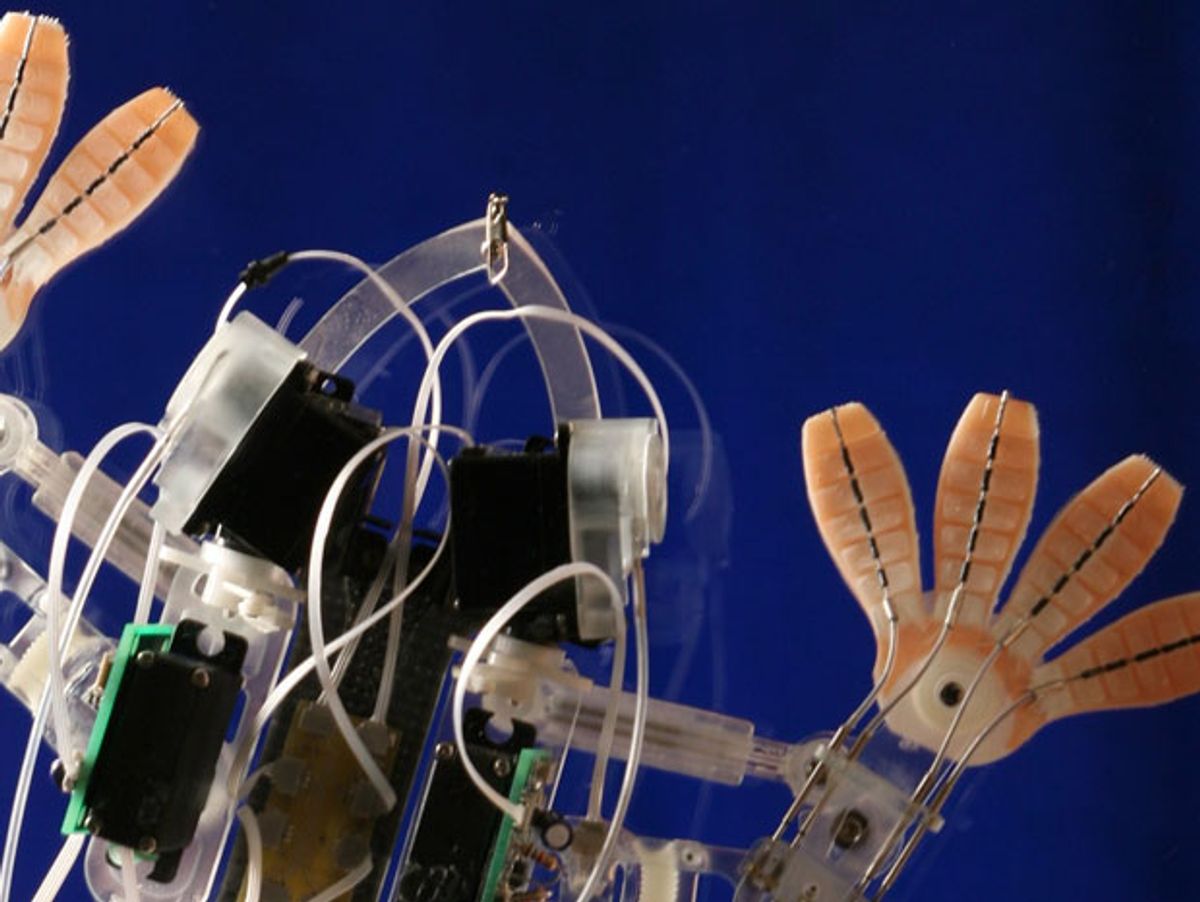Few robots are as elegantly designed as Stickybot, Stanford's original robotic gecko. The bio-inspiration extends all the way down to the toes, which featured an early generation of gecko toe adhesive. Geckos stick to things using van der Waals' forces generated between the tiny fibers on their toes and whatever surface they're on: it's not sticky in the same sense that glue or tape is sticky; it's a molecular attraction that works on the smoothest of surfaces and can be used over and over. It sounds like something that might be useful apart from robots, and it looks like artificial gecko toes are about to go mainstream, with super strong, reusable Geckskin.
While roboticists have been able to replicate functional gecko toes for a while now, there's a lot more that the geckos themselves have going for them besides just their toe material. Because of the molecular bonding, the material sticks to everything, which means that the geckos spend a lot of time trying to keep their toes clean. Also, while the nanoscopic hairs will stick to anything that they come in contact with, it requires very close alignment with a surface. Geckos make this happen with soft and highly flexible toes, but we haven't been able to reproduce that very well. The picture below shows a robotic gecko (the third generation of Stickybot) sticking to glass, and if you look closely, you'll see that not all of the foot is adhering:
Geckskin, which is being developed at the University of Massachusetts Amherst, has solved many of these problems by moving away from direct biomimicry of the gecko toe material and using a "draping adhesion" based on wider fibers instead of the smaller hairs that geckos have. Geckskin is able to stick to anything that's vaguely smooth, including glass, metal, drywall, and wood, and it even works on surfaces that are slightly curved.
The big advantage of Geckskin (besides the loads that it can bear) is that it's very easy to remove from surfaces. Like gecko toes, Geckskin has to be loaded in one specific direction to stick: while there's weight on it pulling down, it'll adhere, but removing the weight and pulling up will peel it right off. To work best, it looks like you have to force the Geckskin very tightly against the surface with a tool, but that doesn't diminish its convenience or usefulness by much.
Watch the video below for seven minutes worth of clips demonstrating that Geckskin really can stick to different surfaces over and over and over; the UMass team has just published a paper on Geckskin, and we're hoping that some kind of commercial development is coming next. And maybe this.
Via [ UMass Amherst ]
Evan Ackerman is a senior editor at IEEE Spectrum. Since 2007, he has written over 6,000 articles on robotics and technology. He has a degree in Martian geology and is excellent at playing bagpipes.




